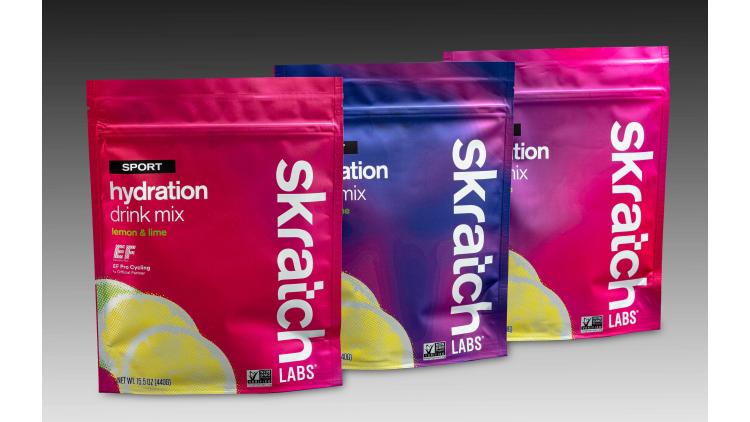In today’s dynamic business environment, efficient forecasting is crucial, especially when dealing with a multitude of Stock Keeping Units (SKUs). Accurate predictions not only help streamline operations but also contribute to optimal inventory management. This blog will explore effective strategies for forecasting when dealing with multiple SKUs, with a focus on flexibility, pouch packaging, handling multi-SKU orders, and achieving fast lead times.
Understanding the Challenge
Managing multiple SKUs poses a significant challenge due to the diverse nature of products, demand fluctuations, and varying lead times. To address this complexity, businesses need to adopt innovative forecasting strategies that enhance accuracy and responsiveness.
1. Embrace Flexibility in Forecasting
One key strategy for efficient forecasting is to embrace flexibility in your approach. Traditional forecasting models may not adequately capture the nuances of today’s rapidly changing markets. Incorporate advanced analytics and machine learning algorithms to analyse historical data, identify patterns, and make predictions in real-time.
Implementing a flexible forecasting model allows businesses to adapt quickly to changing market conditions, unexpected events, and shifts in consumer behavior. This adaptability is particularly important when dealing with a wide range of SKUs, each with its own unique demand patterns.
2. Leverage Advanced Packaging Solutions
In the realm of multiple SKUs, packaging plays a pivotal role. Investing in flexible packaging solutions, such as parenting with a packaging manufacturer that offers multi-sku orders, can offer numerous advantages. Multi-sku flexible packaging is not only versatile but also allows for efficient storage, handling, and transportation of various products.
The flexibility of pouch packaging accommodates different product sizes and shapes, making it an ideal choice for businesses dealing with a diverse range of SKUs. Additionally, pouches often contribute to extended product shelf life, maintaining the quality and freshness of the items within.
3. Optimise Multi-SKU Orders
Efficient handling of multi-SKU orders is a critical aspect of streamlining the forecasting process. Implementing order management systems that are equipped to handle a variety of SKUs seamlessly is essential. Invest in technology that allows for real-time visibility into inventory levels, order statuses, and fulfilment processes.
By optimising multi-SKU orders, businesses can minimise stockouts, reduce excess inventory, and enhance customer satisfaction. This is especially important in industries where customers expect a wide range of product options and fast order fulfilment.
4. Prioritise Fast Lead Times
In a market driven by instant gratification, fast lead times are non-negotiable. Streamlining your supply chain and production processes to achieve fast lead times is essential for meeting customer expectations and staying competitive.
Emphasise collaboration with suppliers to ensure timely deliveries of raw materials. Implementing Just-In-Time (JIT) inventory management practices can help reduce holding costs while ensuring products are readily available to fulfil customer orders.
5. Embrace Technology and Automation
Technology, particularly forecasting software and automation tools, can significantly enhance the accuracy and efficiency of your forecasting processes. Utilise advanced analytics, Artificial Intelligence (AI), and Machine Learning (ML) algorithms to analyse large datasets and predict demand patterns with precision.
Automation can streamline repetitive tasks, allowing your team to focus on strategic decision-making and exception management. This not only improves forecasting accuracy but also increases overall operational efficiency.
6. Collaborate Across Departments
Efficient forecasting is not a standalone process; it requires collaboration across different departments within your organisation. Encourage open communication between sales, marketing, production, and supply chain teams. By sharing insights and information, you can ensure that forecasts are based on a holistic understanding of market dynamics and internal capabilities.
Cross-functional collaboration helps align forecasting efforts with actual market conditions, preventing siloed decision-making and fostering a more cohesive, responsive business environment.
7. Monitor and Adjust in Real-Time
Market conditions can change rapidly, and forecasting is an ongoing process. Implement systems that allow for real-time monitoring of sales data, customer feedback, and external factors that may impact demand. Regularly revisit and adjust your forecasts based on the latest information to stay ahead of market trends and customer preferences.
8. Develop Contingency Plans
Despite the most advanced forecasting methods, unexpected events can disrupt supply chains and demand patterns. Develop contingency plans to address potential disruptions swiftly. This may involve having alternative suppliers, backup production facilities, or flexible logistics solutions that can adapt to unforeseen circumstances.
By having contingency plans in place, your business can navigate challenges more effectively, minimising the impact on customer satisfaction and overall operations.
9. Utilise Historical Data Wisely
While advanced forecasting technologies are crucial, don’t overlook the valuable insights that historical data can provide. Analyse past sales data, customer behaviours, and market trends to identify recurring patterns. This historical context can enhance the accuracy of your forecasts, especially when dealing with products that have established demand cycles.
10. Implement Customer Segmentation
Not all customers are the same, and their purchasing behaviours can vary significantly. Implement customer segmentation to categorise your customer base based on purchasing patterns, preferences, and order frequencies. This allows for more targeted forecasting, ensuring that each segment’s unique characteristics are considered in the planning process.
Effectively forecasting with multiple SKUs is a multifaceted challenge that requires a strategic and integrated approach. By embracing flexibility, leveraging advanced packaging solutions like pouches, optimising multi-SKU orders, prioritising fast lead times, embracing technology and automation, collaborating across departments, monitoring and adjusting in real-time, developing contingency plans, utilising historical data wisely, and implementing customer segmentation, businesses can enhance their forecasting accuracy and responsiveness.
In the fast-paced world of commerce, the ability to efficiently predict and meet demand for a diverse range of products is a competitive advantage. By implementing these strategies, your business can position itself for success in handling the complexities of multiple SKUs, ensuring customer satisfaction, and optimising operational efficiency.
For businesses navigating the challenges of forecasting with multiple SKUs, these strategies serve as a roadmap toward achieving a resilient and adaptive supply chain that can thrive in today’s dynamic markets.
Ready to streamline your multi-SKU forecasting and packaging strategy? Let ePac be your guide. Our experienced team is ready to collaborate with you in optimizing your supply chain, enhancing packaging solutions with flexible pouches, and ensuring fast lead times for efficient order fulfillment. Contact us now to kickstart the conversation and explore how ePac can tailor a solution to elevate your business. Let’s turn your multi-SKU challenges into growth opportunities together. Click here to get in touch with us today.






